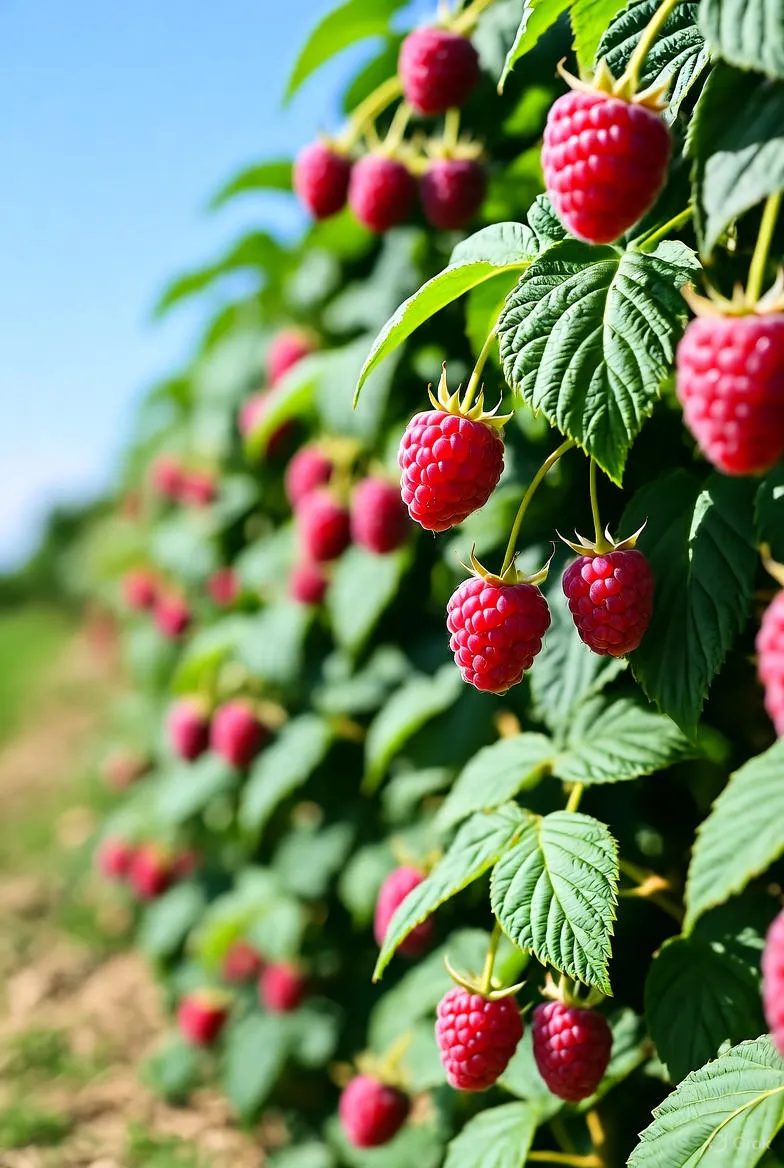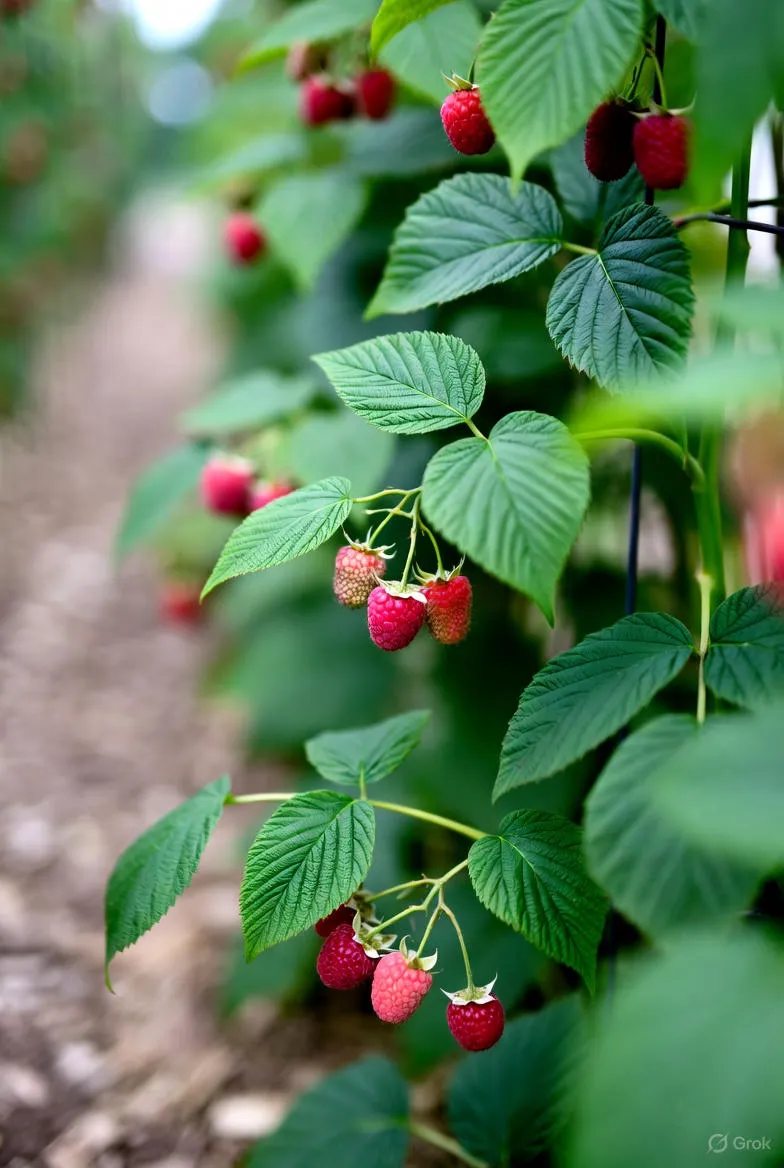Raspberry Diseases and Prevention Tips: How to Keep Your Berry Bushes Healthy All Season Long
Learn about the most common raspberry diseases such as gray mold, root rot, and cane blight, and discover effective prevention tips to keep your raspberry plants healthy and productive all season long.

Raspberries are one of the most beloved berries in home gardens and commercial farms alike. Their sweet, slightly tart flavor and high nutritional value make them a popular choice for both fresh consumption and processing. However, like all fruit plants, raspberries are susceptible to a wide range of diseases caused by fungi, bacteria, viruses, and environmental stress. To maintain a healthy and productive raspberry patch, it’s crucial to understand the most common diseases and implement effective prevention strategies.
Common Raspberry Diseases
1. Botrytis Fruit Rot (Gray Mold)
Botrytis cinerea is a fungal pathogen that thrives in humid, wet conditions. It infects flowers, fruit, and sometimes stems, causing gray, fuzzy mold to develop. The disease often begins at the blossom stage and becomes more visible as the fruit ripens.
Symptoms: Soft, water-soaked berries that become covered with gray fungal spores, especially during rainy or humid weather.
Prevention:
- Improve air circulation by proper spacing and pruning.
- Avoid overhead watering to keep foliage dry.
- Remove infected berries and plant debris immediately.
- Apply approved fungicides at bloom if conditions favor disease development.
2. Phytophthora Root Rot
This soil-borne disease, caused by Phytophthora fragariae var. rubi, is one of the most devastating issues in raspberry cultivation. It primarily affects plants in poorly drained or waterlogged soils.
Symptoms: Wilting during warm weather, yellowing of lower leaves, poor growth, and eventually plant death. Roots appear dark brown and decayed.
Prevention:
- Plant in well-drained soil or raised beds.
- Avoid overwatering and standing water.
- Use resistant varieties such as ‘Latham’ or ‘Boyne’ where available.
- Rotate planting sites to reduce pathogen buildup.
3. Cane Blight
Leptosphaeria coniothyrium causes cane blight, a fungal disease that attacks the canes of raspberry plants, often entering through wounds caused by pruning or mechanical damage.
Symptoms: Dark, sunken lesions near the base of canes, sudden wilting of shoots, and brittle stems that break easily.
Prevention:
- Prune only in dry weather to prevent pathogen spread.
- Remove and destroy infected canes immediately.
- Disinfect pruning tools between cuts.
- Maintain balanced fertilization to avoid overly lush growth.
4. Anthracnose
This fungal disease, caused by Elsinoë veneta, primarily affects the canes and leaves of raspberries. It can lead to reduced yields and poor plant vigor if left untreated.
Symptoms: Small, sunken gray spots with purple margins on young canes; leaf spotting and defoliation in severe cases.
Prevention:
- Prune regularly to promote air flow.
- Apply copper-based fungicides during early spring growth.
- Remove old canes and debris after harvest.
- Avoid working in wet fields to reduce spore spread.
5. Raspberry Mosaic Virus Complex
The mosaic complex is caused by several viruses transmitted primarily by aphids. It leads to poor fruit quality, stunted growth, and yield loss.
Symptoms: Yellow or mottled leaves, distorted foliage, and smaller, crumbly berries.
Prevention:
- Plant virus-free certified stock.
- Control aphids with approved insecticides or biological predators.
- Remove and destroy infected plants promptly.
- Avoid planting near wild raspberry species that may host viruses.
6. Spur Blight
Caused by Didymella applanata, spur blight infects the leaves and canes, often after heavy rainfall or extended humidity.
Symptoms: Brown or purple blotches on canes near leaf nodes, premature leaf drop, and weakened canes that produce fewer berries.
Prevention:
- Thin canes to increase sunlight penetration and airflow.
- Apply protective fungicides during wet periods.
- Remove and burn affected canes after harvest.
General Raspberry Disease Prevention Tips
1. Site Selection and Soil Preparation
Choose a sunny location with well-drained soil to discourage fungal growth. Raspberries prefer slightly acidic soil (pH 5.5–6.5). Avoid areas where tomatoes, potatoes, or strawberries were grown recently, as they can harbor similar pathogens.
2. Proper Spacing and Pruning
Overcrowded plants create humid microclimates that promote disease. Keep rows well-spaced and prune out old or weak canes regularly to improve air movement and reduce moisture retention.
3. Watering Techniques
Always water raspberries at the base of the plant using drip irrigation or soaker hoses. Avoid overhead watering, which wets the foliage and spreads fungal spores. Water early in the day to allow leaves to dry before nightfall.
4. Sanitation Practices
Cleanliness is one of the most effective disease-prevention methods. Remove fallen leaves, fruit mummies, and pruned canes from the planting area. Disinfect tools regularly, and avoid moving soil or debris between infected and healthy areas.
5. Crop Rotation
To prevent soil-borne diseases like Phytophthora root rot, rotate raspberry plantings every 4–5 years. Avoid replanting in the same location immediately after old canes have been removed.
6. Use of Resistant Varieties
Modern breeding has produced several raspberry varieties with increased resistance to specific pathogens. Check with local nurseries or agricultural extensions for recommended varieties suited to your region’s conditions.
7. Biological and Chemical Control
While prevention is key, timely use of biological fungicides or organic-approved chemical sprays can protect plants during high-risk periods. Always follow label directions and use them as part of an integrated pest management (IPM) approach.
8. Monitor Regularly
Inspect plants frequently for early signs of disease. Early detection allows you to isolate and manage issues before they spread widely. Keep a seasonal log of any problems to refine your management strategies over time.
Conclusion
Healthy raspberry plants reward gardeners with abundant, delicious fruit, but maintaining that health requires vigilance and proactive care. By combining good cultural practices, regular monitoring, and early intervention, you can effectively minimize disease pressure and enjoy productive raspberry harvests year after year. Remember that prevention is far easier and less costly than cure, so stay attentive to your plants’ needs throughout the growing season.


